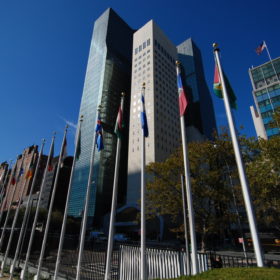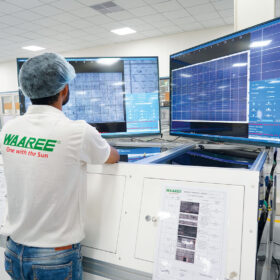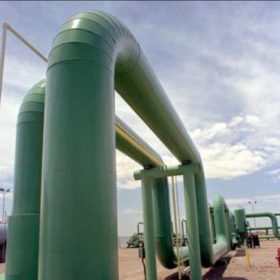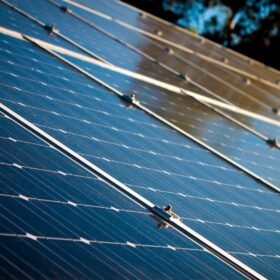India replaces one-crore conventional streetlights with ‘energy-efficient’ LEDs
These LED streetlights—installed under the world’s largest streetlight replacement programme being implemented by state-owned Energy Efficiency Services Ltd (EESL)—have helped the country to reduce its greenhouse gas emission by 4.63 million tonnes annually.
India gifts solar rooftop to United Nations
The $1 million Gandhi Solar Park was an attempt to signal to the world India is committed to renewable energy. The 50 kW array features one panel for each UN member state.
India aiming to exceed 400 GW of renewables by 2030: PM Modi
The prime minister also underlined that global actions to tackle climate change are not enough, and called for mass movement to bring about behavioural change.
IRENA and the UN ink agreement in New Delhi to combat desertification with renewables
A memorandum of understanding signed by the institutions was not solar specific but the use of PV modules for shading, especially in agriculture, can reduce water consumption and help halt the expansion of deserts.
The energy transition is easily affordable but all hope of 1.5C warming will vanish in 2028
Technical consultancy DNV GL has published its Energy Transition Outlook 2019. While the electric vehicle, storage and renewable energy industries are likely to see significant rises in demand, the sobering conclusion is the world will miss carbon reduction targets by a long shot.
Solar irrigation product converts sunlight directly into motion
The invention converts energy produced by PV cells directly into mechanical motion without batteries or power electronics. Its developers claim the solar motor can drive irrigation water pumps and ventilation turbines for more than 20 years without maintenance.
Eric Luo: China will see just 20-25 GW of solar per year through 2025
The GCL System chief executive made comments that fly in the face of an expected solar gold rush in China that analysts predict will start this month. Though rising overseas demand will address overcapacity fears, according to Luo, the soundbite is sure to chill PV boardrooms across the world’s biggest solar market.
Hydrogen-powered bicycles offer new electromobility concept
With the 200 hydrogen bikes offered to journalists and world leaders at the G7 summit in Biarritz, France proving popular, manufacturer Pragma Industries has received an order for 1,000 of them from Chilean president Sebastian Pinera. The company’s founder, Pierre Forté, wants the bike to have a societal impact in developing countries.
West Bengal could get 1.7 GW of solar but coal will reign for at least 30 years
A minister said an unnamed private investor had proposed an 800 MW solar project in the state on top of a 900 MW scheme being carried out with Japan. But the chairman of power giant NTPC said AI and digitization should be used to extend coal burning for decades to come.
India needs to stress equity in push for a green economy
Transition to a green economy in India must be ‘just,’ keeping in mind vulnerable livelihoods. It would need to look at the labour surplus issue, especially for those employed in agriculture and informal sectors—said experts at a national consultative workshop held by sustainability thinktank The Energy and Resources Institute in New Delhi.













